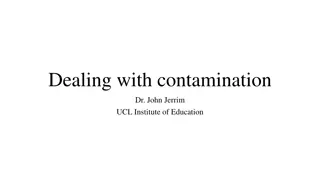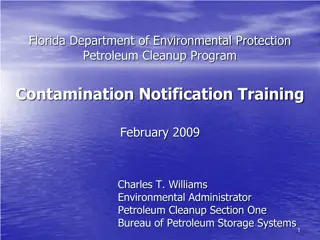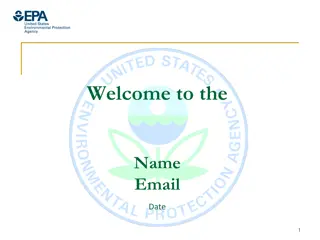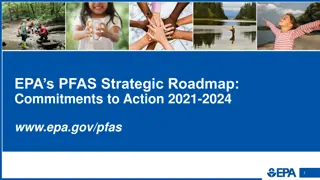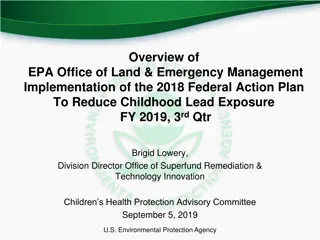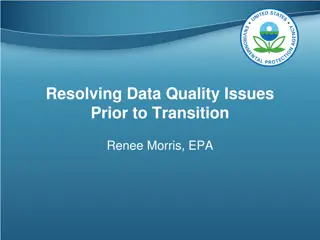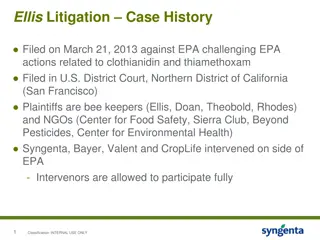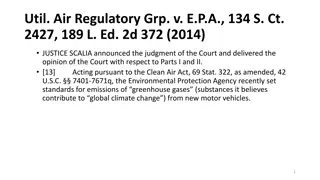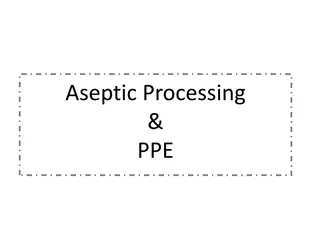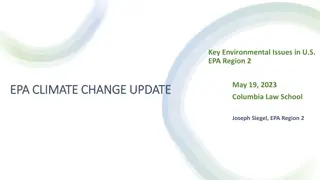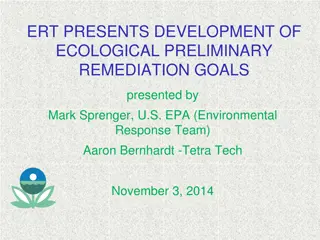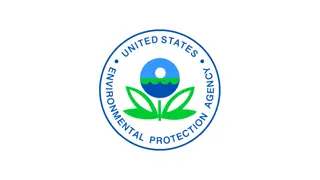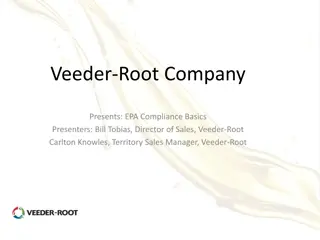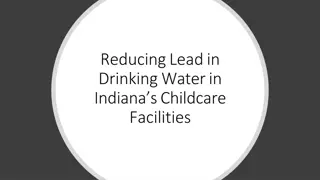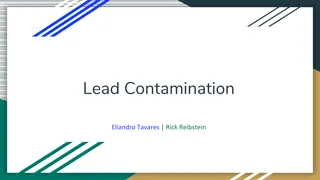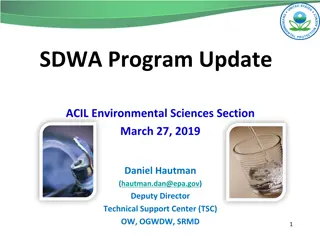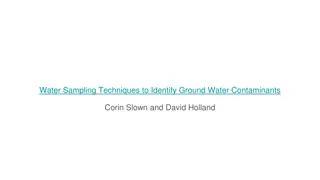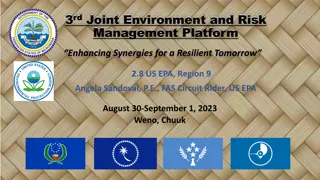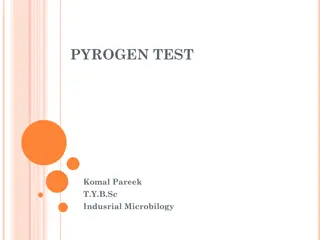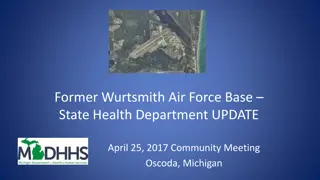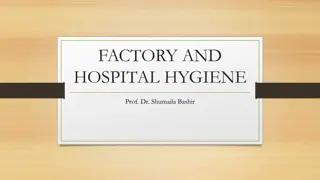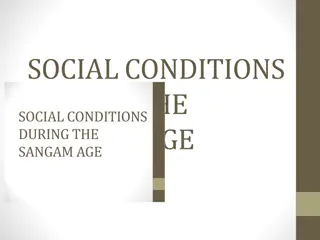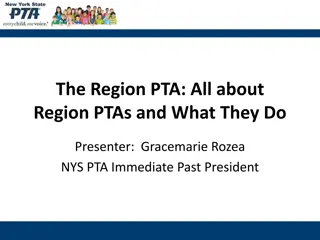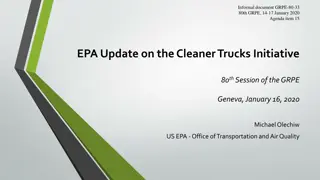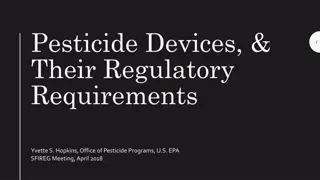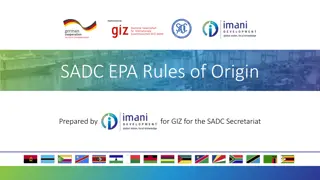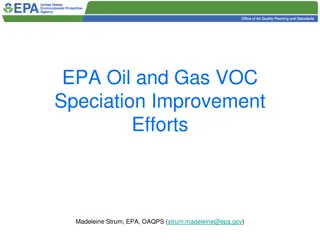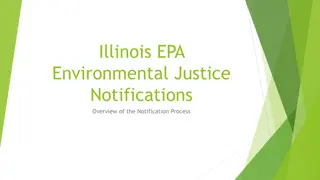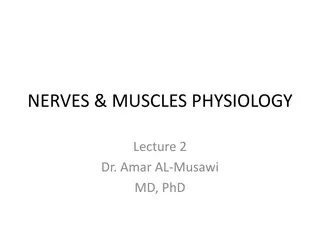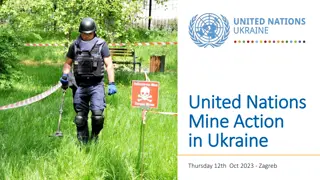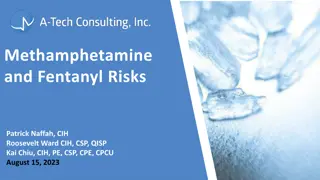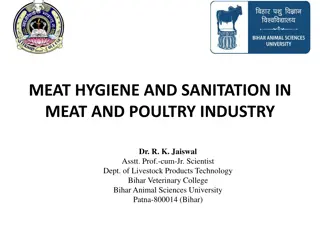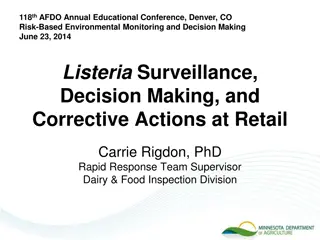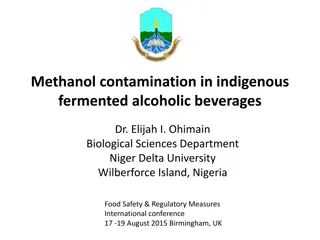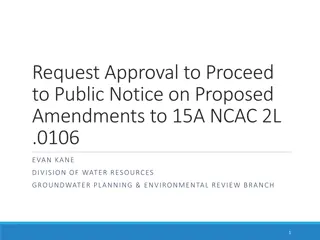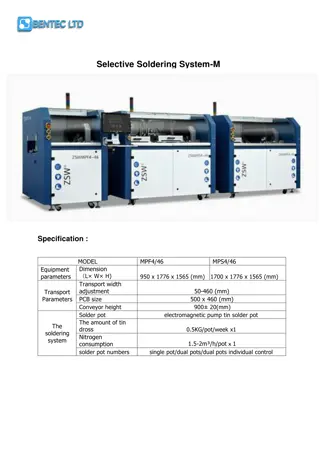Guidelines on EPA Region 9 Response Action Levels for TCE Contamination
EPA Region 9 has established response action levels for TCE contamination, with tiered concentrations for different exposure scenarios. The State of California provides guidance aligned with these levels. DTSC concurs with EPA's residential and industrial response levels but recommends consultation if certain concentration thresholds are exceeded. OSHA/NIOSH standards for TCE are also compared to EPA's indoor air response action levels.
Download Presentation

Please find below an Image/Link to download the presentation.
The content on the website is provided AS IS for your information and personal use only. It may not be sold, licensed, or shared on other websites without obtaining consent from the author. Download presentation by click this link. If you encounter any issues during the download, it is possible that the publisher has removed the file from their server.
E N D
Presentation Transcript
U.S. EPA Region 9s New Response Action Levels 02 October 2014 Derral Van Winkle, P.G. NAVFAC Southwest, Environmental Restoration Program Manager
Overview Background What are the EPA Region 9 response action levels? Does State of California have guidance? Comparison with other standards Sampling considerations What are the recommended potential response actions?
Background 2011 EPA Revised toxicity assessment for TCE in Integrated Risk Information System (IRIS) December 2013 EPA Region 9 issued a memorandum to SF RWQCB identifying some requirements for South Bay sites Similar to response levels issued in July 2014 Terminology and concentrations changed slightly July 2014 EPA Region 9 issues memorandum with recommendations to division staff and management Identifies tiered response action levels which are based on acute, short term effects of TCE EPA cites National Contingency Plan and Superfund Guidance as basis for legal requirement for oversight on NPL sites State of California DTSC published HERO HHRA Note Number 5 on 21 August 2014
EPA Region 9 Response Action Levels Tiered Concentrations Accelerated Response Action Level (HQ = 1) Urgent Response Action Level (HQ = 3) Exposure Scenario 2 g/m3 6 g/m3 Residential 8 g/m3 24 g/m3 Commercial/Industrial (8-hour workday) 7 g/m3 21 g/m3 Commercial/Industrial (10-hour workday)
DTSC Response to EPA Region 9 Response Action Levels Concurs with EPA residential and industrial setting response Levels But: If in residential exposure scenario with TCE concentrations >1 g/m3, or If in industrial exposure scenario with TCE concentrations >3 g/m3 HERO strongly recommends consulting the assigned HERO toxicologist assigned to the site to review TCE concentrations with respect to site-specific conditions
OSHA/NIOSH TCE Standards Compared to 2014 EPA TCE Indoor Air Response Action Levels 537,000 OSHA Permissible Exposure Limit (ug/m3) - 8 Hour TWA 134,250 Measured Data/Threshold NIOSH Relative Exposure Limit (ug/m3) - 10 Hour TWA 24 09 July 14, EPA Region 9 Urgent Response Threshold - Industrial (ug/m3) ~270,000 X less than OSHAPEL 8 09 July 14, EPA Region 9 Accelerated Response Threshold - Industrial(ug/m3) 6 09 July 14, EPA Region 9 Urgent Response Threshold - Residential (ug/m3) ~67,000 X less than OSHAPEL 2 09 July 14, EPA Region 9 Accelerated Response Threshold -Residential (ug/m3) Concentration (ug/m3) 6
Sampling Considerations Recommends sampling be time-integrated Accounts for temporal variability average concentration over fixed time period EPA advises quick turn around sampling if: Exposure of women of reproductive age exists Existing data indicate results that exceed response action levels Multiple lines of evidence suggest exceeding the response action levels is probable Confirmation samples if previous sampling indicated concentrations above the response action levels and early or mitigation actions were taken DTSC guidance recommends seasonal sampling (e.g., warm and cool season) If first sample has concentration >0.48 g/m3 and < response level then obtain sample more quickly than seasonally Additionally, effectiveness of an interim action should be evaluated within a few weeks Concentrations > immediate response action should lead to actions within a few days
Potential Response Actions Tiered Responses Below Action Response Levels Recommend routine periodic sampling/monitoring Accelerated Response Action Level Early or interim mitigation and effectiveness confirmed promptly Sealing potential conduits (e.g., cracks, utility conduits) Increasing building pressurization or ventilation Treating indoor air Urgent Response Action Level Recommend mitigation measures initiated immediately and effectiveness confirmed before any additional exposure is allowed (temporary relocation may be indicated )
Potential Response Actions Tiered Responses Below Action Response Levels Recommend routine periodic sampling/monitoring Accelerated Response Action Level Early or interim mitigation and effectiveness confirmed promptly Sealing potential conduits (e.g., cracks, utility conduits) Increasing building pressurization or ventilation Treating indoor air Urgent Response Action Level Recommend mitigation measures initiated immediately and effectiveness confirmed before any additional exposure is allowed (temporary relocation may be indicated ) DTSC indicates success in immediately reducing indoor air concentrations with stand-alone air purifiers with carbon filter units and built-in air circulation fans
Summary EPA Region 9 has issued tiered response action levels for TCE in indoor air based on updated toxicity information NPL Sites California state DTSC also has published guidance Response action levels are orders of magnitude below legal short term exposure levels established by OSHA Sampling should be time-integrated approach over defined time period Response actions include wide variety of actions including revisions to building pressure/ventilation up to temporary relocation of building inhabitants For concentrations > response action levels various interim actions and timeframes are recommended Sealing cracks to temporary relocation of occupants Few weeks to few days


